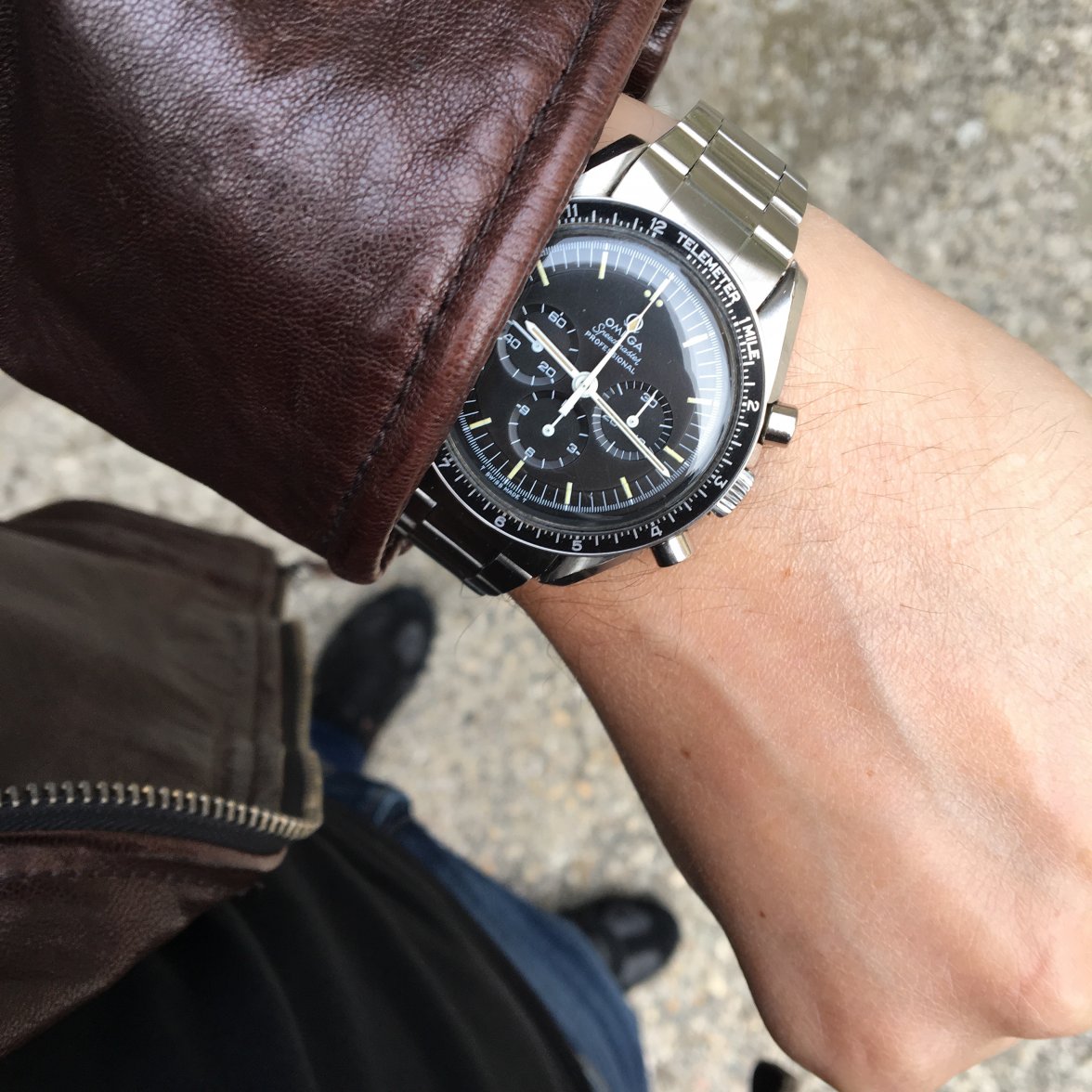

The new reference ST105.021 featured a more robust build with a thicker and larger 42mm case construction, crown guards and wider-set pushers, and is the model worn by Neil Armstrong on the Apollo 11 mission. The Speedy that Went to the Moonīy 1969, the Speedmaster had undergone a few additional revisions, and it’s here that we see the model start to take the shape of the beloved Speedy we know today. However, NASA suggested a few improvements and modifications: the addition of a 24-hour rotating bezel and luminous markings to the elapsed time dials. It was unanimous - the Speedy won by a landslide. The luminous material on the dial was destroyed, but all in all, the Omega chronograph performed satisfactorily. Then, there was the Omega Speedmaster: It gained 21 minutes during the decompression test and lost 15 minutes during the acceleration tests. The Longines-Wittnauer also failed one of the temperature tests as well as the decompression test. The Rolex model stopped running on two occasions during the relative humidity test and failed one of the temperature tests. “The NASA watch trials were essentially a torture program for the watches in question.”įinally, on March 1, 1965, the results were in. Finally, this was followed by an acceleration test, decompression test and one last high-pressure test. The watches were then put through another round of assessments to simulate changes in humidity and gravity.

Next, they evaluated the watches’ ability to withstand fluctuations in temperature and pressure to simulate additional changes in gravity. They began with extreme temperature testing to simulate the intense climate of the Moon, where temperatures range from minus 260 degrees Fahrenheit to over 260 degrees Fahrenheit. The NASA watch trials were essentially a torture program for the watches in question. (Note: The 242T is the assumed reference that Longines-Wittnauer submitted, but this has yet to be confirmed.)
#Nasa omega series#
The other watches - the Rolex 6238 “pre-Daytona,” the Longines-Wittnauer 242T, and the Omega Speedmaster – were put through a rigorous series of tests.

However, Hamilton presented a pocket watch, and was thus disqualified for not complying with NASA’s specifications. Only four of the ten brands answered the call - Omega, Longines-Wittnauer, Rolex and Hamilton. They began the process by putting out a request for proposals from a select few brands: Elgin, Benrus, Hamilton, Mido, Lucien Piccard, Omega, Bulova, Rolex, Longines-Wittnauer and Gruen. The NASA Watch TrialsĪ year after the launch of the Apollo Program, NASA started a search for a reliable timepiece to serve as the official watch of the space program. But before the monumental first lunar landing could take place, NASA needed one other key piece of technology.

Still, the goal of the program wouldn’t be reached until the launch of Apollo 11 in 1969. This mission, along with Apollo 10, tested various spacecraft components and systems while orbiting the Moon and produced crucial images of the lunar surface. Here, we’ll look briefly at the key steps that led Omega to become a part of the Apollo program, how the Speedmaster has evolved over the past five decades, and the role the iconic model continues to play in space travel today.Īpollo 8 also provided the first live televised photos of the Earth and Moon to roughly 50 million viewers around the country. Since that pivotal moment, the Speedy has become inextricably linked with the first lunar landing, even garnering the affectionate nickname “the Moonwatch.” NASA's current Artemis program marks the first time in over 50 years for humans to return to the moon, and even longer since the history-making moment of the first man on the Moon - and the watch that accompanied him. Inside, it carried four important crew members: Commander Neil Armstrong, Command Module Pilot Michael Collins, Lunar Module Pilot Buzz Aldrin and, last but not least, the Omega Speedmaster mechanical chronograph. Just four days later, on July 20, 1969, it landed on the surface of the Moon. The Apollo 11 spacecraft, whose command module was incidentally named Columbia, launched into orbit from the Kennedy Space Center in Brevard County, Florida. They depicted a spacecraft being fired from a columbiad (a type of Civil War-era cannon) in Florida to the Moon, and subsequently splashing down in the Pacific Ocean.Ī century later, on the morning of July 16, 1969, Verne’s premonition came true. In the late 1800s, celebrated French author Jules Verne published a pair of sci-fi novels predicting man’s journey to the Moon.


 0 kommentar(er)
0 kommentar(er)
